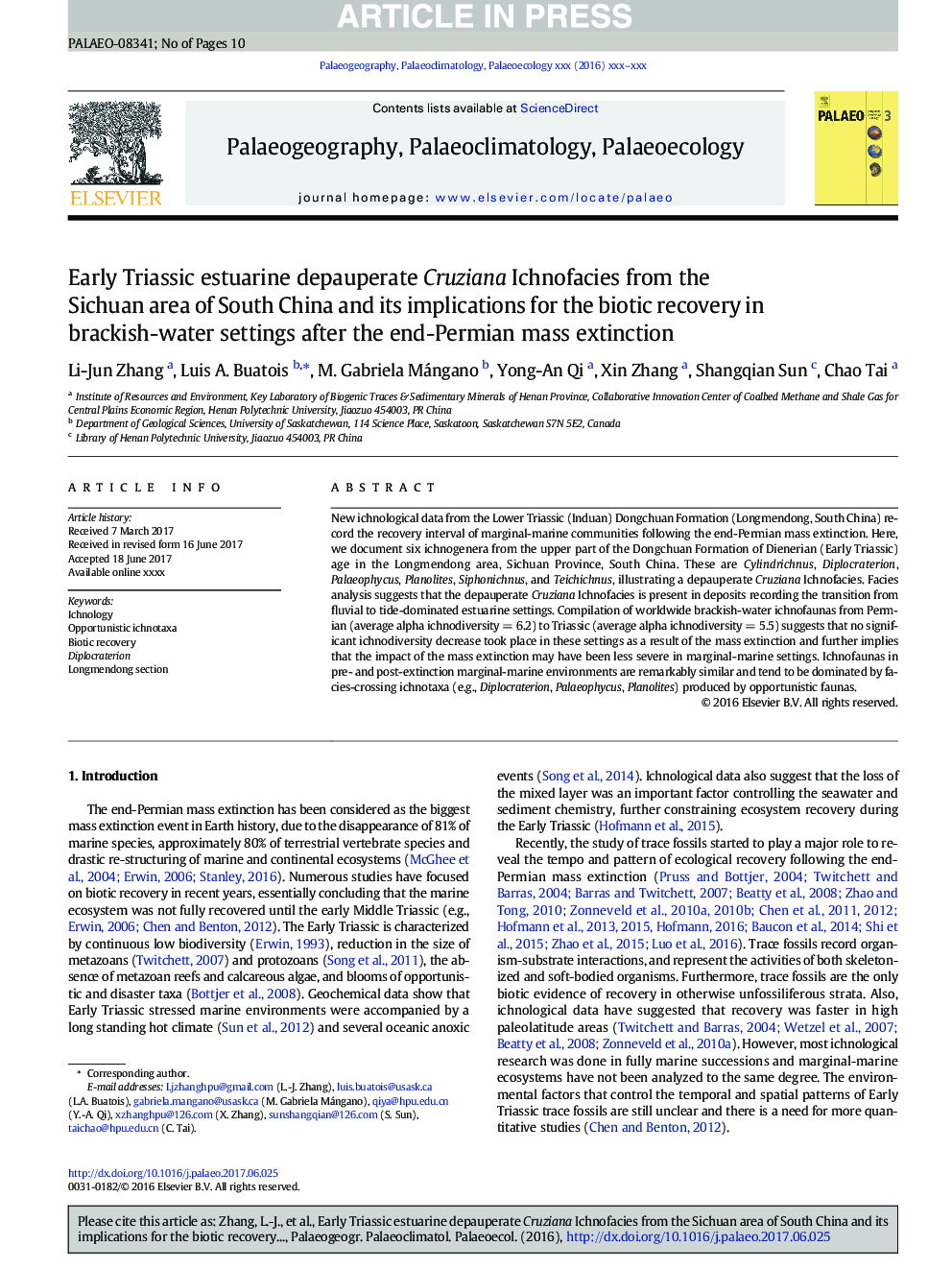| Article ID | Journal | Published Year | Pages | File Type |
|---|---|---|---|---|
| 8868662 | Palaeogeography, Palaeoclimatology, Palaeoecology | 2017 | 10 Pages |
Abstract
New ichnological data from the Lower Triassic (Induan) Dongchuan Formation (Longmendong, South China) record the recovery interval of marginal-marine communities following the end-Permian mass extinction. Here, we document six ichnogenera from the upper part of the Dongchuan Formation of Dienerian (Early Triassic) age in the Longmendong area, Sichuan Province, South China. These are Cylindrichnus, Diplocraterion, Palaeophycus, Planolites, Siphonichnus, and Teichichnus, illustrating a depauperate Cruziana Ichnofacies. Facies analysis suggests that the depauperate Cruziana Ichnofacies is present in deposits recording the transition from fluvial to tide-dominated estuarine settings. Compilation of worldwide brackish-water ichnofaunas from Permian (average alpha ichnodiversity = 6.2) to Triassic (average alpha ichnodiversity = 5.5) suggests that no significant ichnodiversity decrease took place in these settings as a result of the mass extinction and further implies that the impact of the mass extinction may have been less severe in marginal-marine settings. Ichnofaunas in pre- and post-extinction marginal-marine environments are remarkably similar and tend to be dominated by facies-crossing ichnotaxa (e.g., Diplocraterion, Palaeophycus, Planolites) produced by opportunistic faunas.
Keywords
Related Topics
Physical Sciences and Engineering
Earth and Planetary Sciences
Earth-Surface Processes
Authors
Li-Jun Zhang, Luis A. Buatois, M. Gabriela Mángano, Yong-An Qi, Xin Zhang, Shangqian Sun, Chao Tai,
